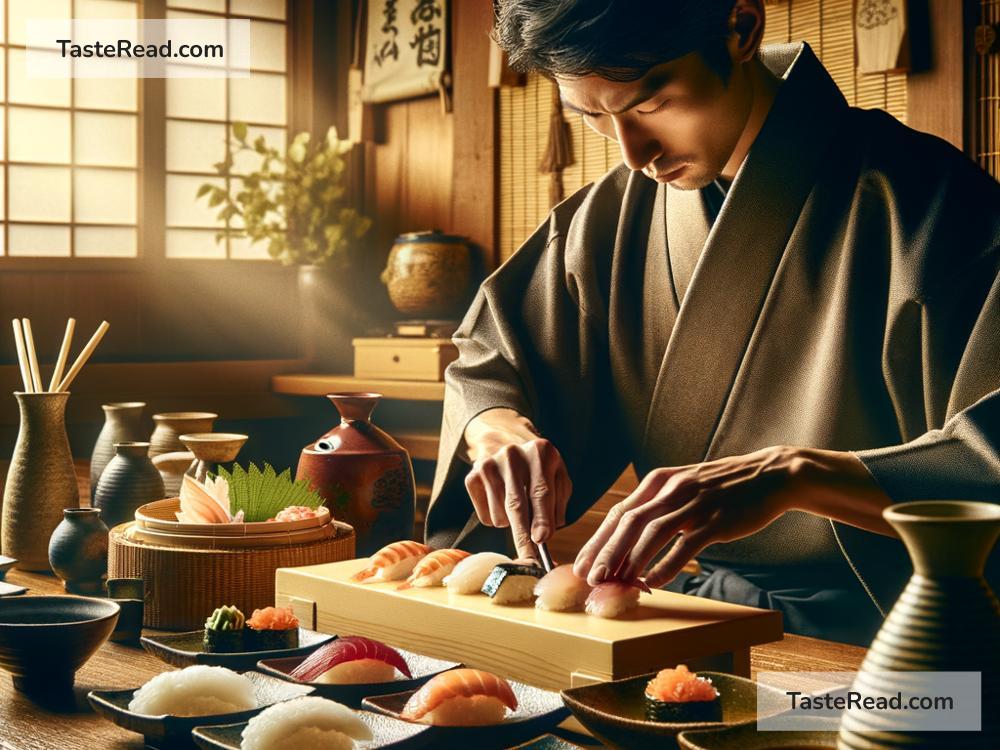The Art of Japanese Sushi-Making and Its Ties to Tradition
Sushi is more than just food—it’s an art form and a symbol of Japanese culture. Though it has gained worldwide popularity, its roots go deep into Japan’s history and traditions. Sushi-making is not just about slicing fresh fish or rolling rice; it’s a process that requires skill, patience, and respect for the ingredients. In this blog post, we’ll explore the fascinating art of sushi-making and how it reflects Japanese values and traditions.
What Is Sushi?
Sushi is a dish made with vinegared rice that is often paired with seafood, vegetables, or other ingredients. Many people think sushi always involves raw fish, but that’s not true. There are many types of sushi, and some do not include raw fish at all. What makes sushi special is the balance of flavors. The rice should be lightly seasoned, the fish should be fresh, and the ingredients should work together in harmony.
Sushi can take many forms, such as nigiri (small rice balls topped with a slice of fish), maki (rolled sushi wrapped in seaweed), and sashimi (thin slices of raw fish served without rice). Each variation has its own charm and purpose, but all require careful preparation and attention to detail.
The Origins of Sushi
The history of sushi dates back more than 1,000 years. It began as a method of preserving fish using fermented rice, a practice known as narezushi. Fishermen would pack salted fish into rice and let it ferment for months. The rice was later discarded, and the preserved fish was eaten.
As time went on, people adapted this method to suit different tastes. By the Edo period (1603-1868), sushi evolved into something closer to what we know today. This was the era of edomae sushi, when raw fish began to be paired with vinegared rice and served fresh. Sushi became a quick and convenient meal, especially in bustling cities like Tokyo (formerly called Edo).
The Skills of a Sushi Chef
Becoming a sushi chef is not easy. In Japan, sushi chefs are highly respected because the profession requires years of training and discipline. A sushi apprentice may spend years just mastering the basics, like cooking rice properly or slicing fish to the perfect thickness.
One of the most important skills a sushi chef must learn is knife work. The way fish is cut can affect its texture and flavor. For example, softer fish like tuna requires smooth, even cuts, while firmer fish like squid needs precise scoring to enhance tenderness. The chef’s ability to handle the fish honors the ingredient and brings out its best qualities.
Another skill is understanding balance. A good sushi chef knows how to combine flavors, textures, and proportions to create a dish that is delicate yet satisfying. The rice should complement the fish, not overpower it. The wasabi, soy sauce, and garnishes are added sparingly to highlight, not mask, the natural taste of the fish.
Tradition in Every Bite
Sushi-making embodies principles that reflect broader Japanese traditions, such as respect for nature, simplicity, and craftsmanship.
-
Respect for Nature: In Japan, there is a deep respect for the natural world. Sushi chefs honor this by using the freshest seasonal ingredients. Fish is carefully chosen to ensure quality and sustainability. Even the way ingredients are handled—like gently plating slices of fish—reflects respect for the food.
-
Simplicity: Japanese culture values simplicity and elegance, and sushi is a perfect example of this. Sushi dishes often look simple, but they require great attention to detail. The minimalist presentation lets each ingredient shine.
-
Craftsmanship: Sushi-making is seen as an art. Just as traditional craftsmen create pottery or tea utensils with care, sushi chefs dedicate themselves to perfecting their craft. Many families pass down sushi-making techniques through generations, keeping traditions alive.
Modern Sushi
While traditional sushi remains beloved, modern sushi variations have emerged over the years. Sushi rolls, like California rolls, have added new flavors and textures that appeal to international tastes. Fusion sushi combines Japanese techniques with global ingredients, creating dishes like sushi tacos or sushi burgers. These creative adaptations show how sushi continues to evolve while still being rooted in Japanese culture.
At the same time, many sushi chefs and enthusiasts work to preserve traditional methods. From high-end sushi restaurants to small family shops in Japan, they emphasize authenticity and respect for heritage.
Why Sushi Is Special
Sushi is not only delicious but also symbolic. Every roll and slice tells a story of history, culture, and craftsmanship. Whether you’re eating sushi at a fancy restaurant or enjoying it at a casual spot, you’re tasting the result of centuries of tradition.
Next time you enjoy sushi, take a moment to appreciate its beauty and balance. Think about the dedication behind every ingredient and the cultural values it represents. Sushi is more than food—it’s an experience that connects us to the heart of Japan.
So, whether you’re a sushi lover or trying it for the first time, remember the art, skill, and tradition behind this beloved dish. It’s a reminder that food can be much more than just a meal—it can be a connection to history and human creativity.


